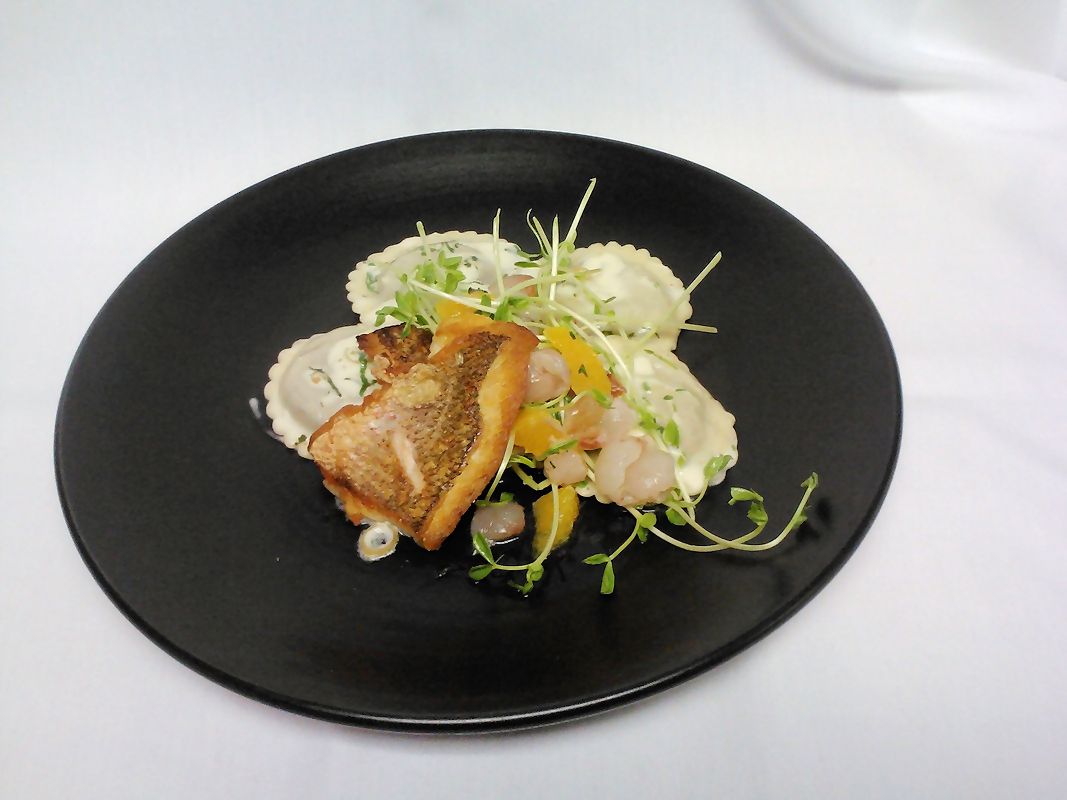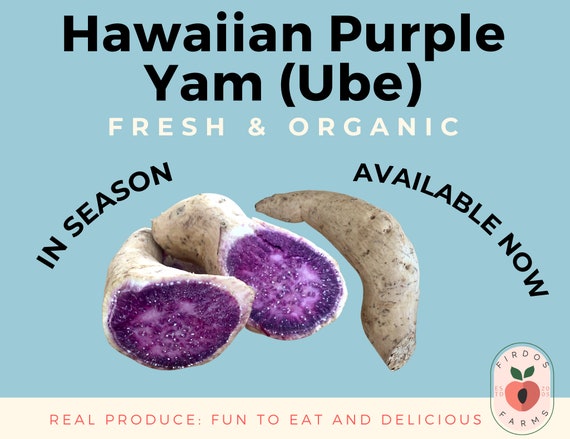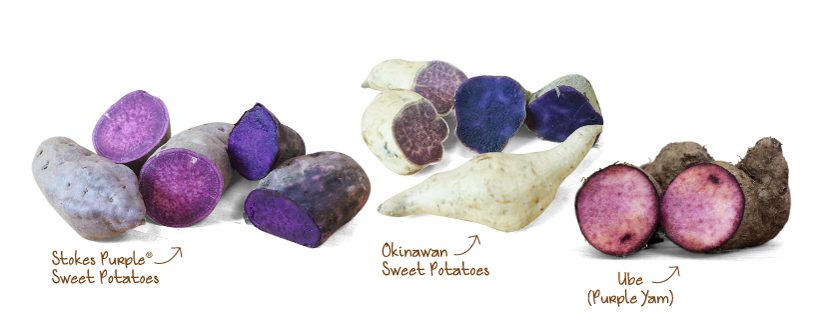
Purple sweet potatoes get their striking interior color from the same source as blueberries, the antioxidant anthocyanin. They’re purple for the same (healthy) reason blueberries are. The holiday season is a perfect time to get to know purple sweet potatoes, before they become the next California food phenomenon (kale, anyone?) Here’s 10 things you should know about this unique root vegetable: 1. If Stoddard is successful, that would mean more delicious purple sweet potatoes on the market and in the market, nestled against orange sweet potatoes. “We think we can improve yield and the overall appearance - it tends to grow a little bit long and it can also get bumps and whatnot on the skin,” Stoddard said. So Stoddard is working on taking the “purple/purple” one step forward. But farmers have a hard time getting a great yield out of this tasty tater. You can already find the Stokes, a variety of “purple/purple” which originated in North Carolina, on the market, especially in specialty markets. Stoddard’s goal is to create a new “purple/purple” variety of sweet potato: One that is purple-skinned on the outside, with a vibrant purple interior, and make it available year-round. Not to mention that they’re eye-popping on both your dinner table, and Instagram. Check on-line for sources.“They’re good with things like butter and salt and pepper,” Stoddard says. I’m not sure this would work, but it might be fun trying! You should be able to find these sweet potatoes at some grocery stores and farmers’ markets.
#Purple hawaiian potato how to
This article discusses how to make your own slips, from (preferably) organic purple sweet potato. How to Grow Purple Sweet Potatoes: Tips for DIY Potato Slips. It provides details on how to grow the sweet potatoes. Okinawan Sweet Potatoes: How to Plant & Grow. Note that US companies won’t be permitted to ship slips across the border. You may even find a few US companies during your search, they may have information about Canadian suppliers. If these companies don’t offer slips, I’d suggest that you contact them directly to see if they know of a supplier. As well, check on-line Canadian seed catalogue companies – they may sell slips. We’re not permitted to recommend sources of plants, however I can suggest that you search the internet using terms like “sweet potato slips Canada” (or Ontario).

The plants have little resistance to cold weather – during cold snaps, they would require protection.

See Ask a Master Gardener’s Plant Hardiness Zones.

The plant is recommended for USDA Zone 6b or warmer - so growing it in Toronto is pushing the envelope, as our climate is usually considered Zone 6 (USDA Zone 5) – although there are pockets where zones may be warmer (a higher number).

The vine would be considered an annual if grown in Toronto, and it’s not clear if our summers are long or hot enough to allow the plant to grow to the point where it would yield a crop of sweet potatoes large enough to eat.
#Purple hawaiian potato full
It needs full sun (at least 6 hours a day) and well-draining soil that is (ideally) slightly acidic (pH from 5.5-6.5). Of note, the plant requires a long and hot growing season – it may take from 120-180 days from planting to harvest. The slips would be planted after all danger of frost has passed (in Toronto, usually mid to late May). The Okinawan sweet potato is grown like other sweet potatoes, from slips, or live cuttings that can be transplanted in the ground. Despite its name, your sweet potato is native to the Americas – a few hundred years ago it became popular in Japan and Hawaii.
#Purple hawaiian potato skin
The skin of this sweet potato is thin and edible, while the interior is purple, from antioxidants called anthocyanins. Okinawan sweet potatoes ( Ipomoea batatas) belong to the morning glory family.


 0 kommentar(er)
0 kommentar(er)
